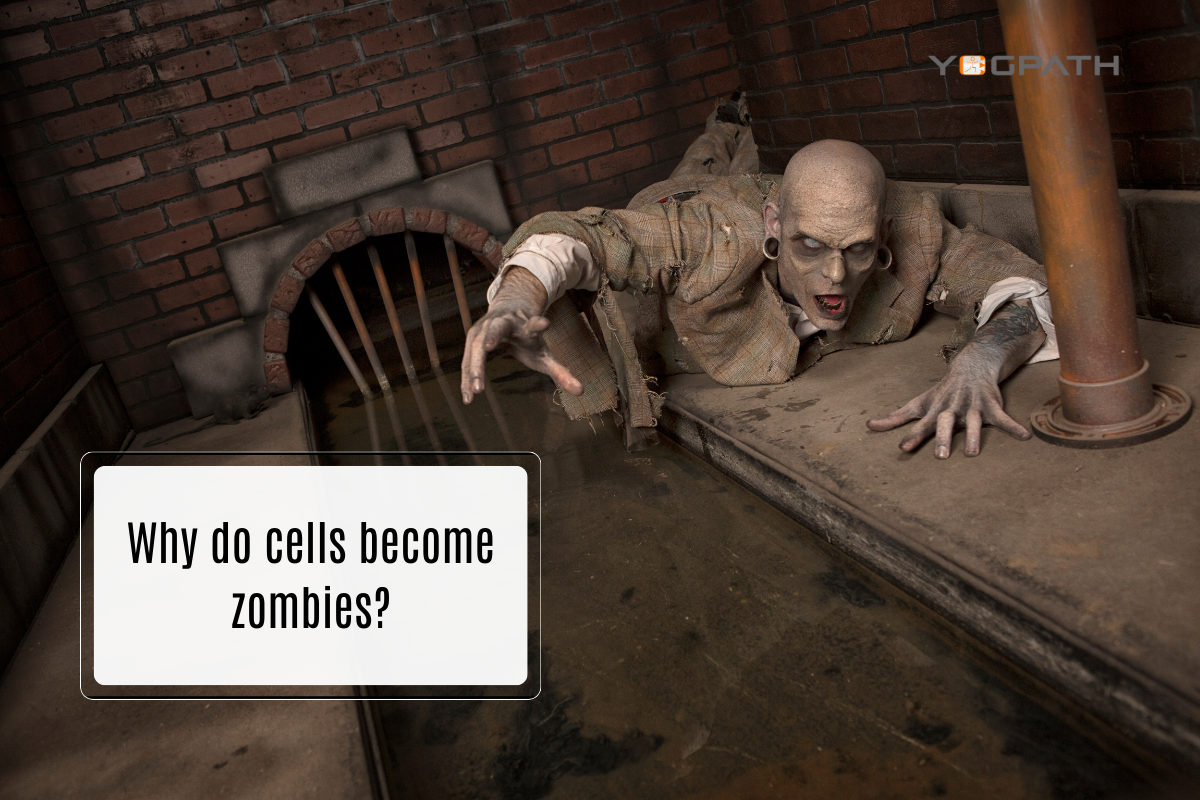
Zombie Cells: Every cell in our body has an inherent property that causes it to divide a certain number of times, after which it triggers an inbuilt route that causes it to destroy itself. This process occurs at regular intervals (called Apoptosis). This is done to ensure that our organs continue to get a supply of new cells to replace the old ones and to ensure that they continue to perform at their highest potential.
However, as we become older, our capacity for cell renewal decreases, and the majority of our organs lose their ability to naturally regenerate, leading to an increase in the number of cells that have died. Nevertheless, in addition to this, there is still another extraordinary occurrence that takes place. Enter the world of Zombie Cells.
Why do cells become zombies?
After achieving the predetermined number of cell divisions, some of them may lose the ability to engage the “death switch,” and they may enter a period known as senescence. During this stage, a cell is unable to divide and is also unable to die off. To put it another way, rather than becoming “dead cells,” they transform into “dying cells.” The scientific name for these cells is senescent cells, however, the phrase “zombie cells” is the one that is most widely used to refer to them.
Why do cells become zombies?
Because they have two characteristics that are identical to those of the zombies in “Into the Dead”:
Not quite dead, and not yet alive: The cells, much like zombies, are neither precisely living nor contributing to the usual functioning of the tissue. Since they are also not dead, the natural waste disposal mechanisms are unable to properly remove them from the tissue.
They prey on the ones around them that are still healthy: Senescent cells, similar to zombies that prey on healthy people nearby to convert them into zombies, are known to secrete a significant amount of toxins that are responsible for inflammation and cause harm to healthy and youthful cells in the surrounding area.
These senescent cells, also known as zombie cells, have recently emerged as one of the most suspect actors in the chain of events that leads to age-related frailty and the decline of organ function. At any point in time, if the number of zombie cells rises disproportionately, they become the pied piper of Hamelin for a variety of age-related disorders that damage bones, the heart, the brain, and other essential organs. These cells are also a primary contributor to the DNA being damaged in the body.
The Zombie Killers
We may count ourselves fortunate that, just as we see highly armed individuals taking out zombies in movies, the natural world also offers us potential Zombie cell Killers. These substances are referred to as “Senolytics.” Seno is short for senescence, while lysis is the Greek word for killing. Senolytics are a group of natural substances and medicines that are meant to have senescent cell-killing action. They are presently actively employed in therapeutics for the treatment of senescence-related disorders such as osteoporosis. Senolytics are designed to have senescent cell-killing activity. Senolytics are present in a variety of foods, including strawberries, grapes, coffee, and red wine.
The following are two of the most common natural senolytics:
Fisetin: According to the findings of several scientific studies, fisetin is one of the active components of strawberries that is known to have a powerful senolytic effect. It is extensively used in contemporary therapies, health, and wellness practices to address the harm that is connected with senescent cells.
Multiple scientific research and clinical trials have shown that the active component of coffee known as quercetin has a potent senolytic effect.
Senolytic Activators are a potentially useful therapeutic approach for the future, and there are lofty expectations that they will be discovered to be the key to human existence that is both long and healthy. Many recent findings in anti-ageing research are now pointing us in the direction of a younger, more robust, and healthier future. This bodes well for the field of health and wellness, which is why the future is so exciting.











